Making Pennycress Pay Off
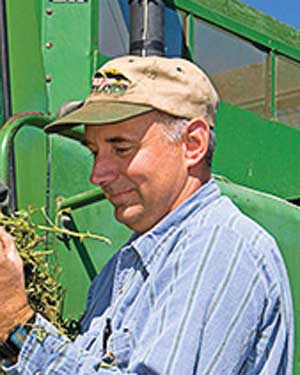
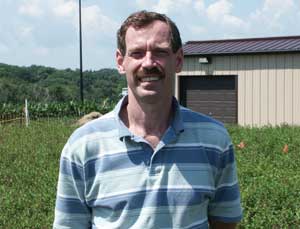
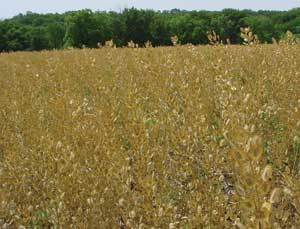
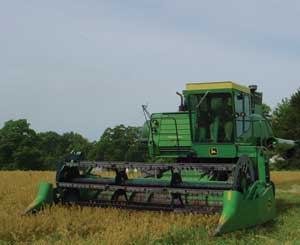
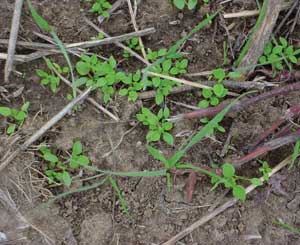
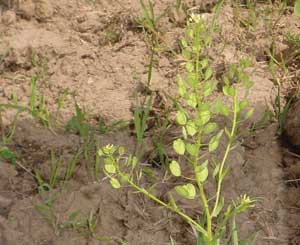
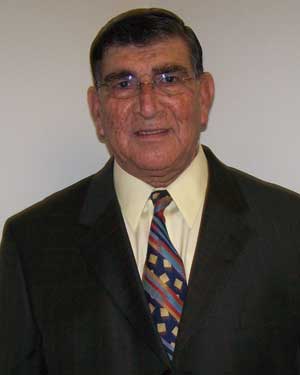

January 17, 2008
BY Susanne Retka Schill
Researchers in Illinois believe they have the answer to the continuing food versus fuel debate and high commodity prices that challenge the biodiesel industry: pennycress. Their excitement stems from the ability of the plant to be transformed from a weed into a biodiesel feedstock. "It's off season from corn and soybeans, has high seed yield and high oil," says Terry Isbell, lead researcher in the new crops and processing technology group at the National Center for Agricultural Utilization Research at Peoria, Ill. "This plant wants somebody to pay attention to it."
Field pennycress may be a new crop in development, but it's an old weed. Thlaspi arvense is a winter annual weed known by farmers under several names-field pennycress, stinkweed, frenchweed-that grows widely across the Midwest. It isn't considered a big weed problem because it completes its life cycle in late spring and doesn't compete with newly planted corn or soybeans. Pennycress is a member of the mustard family. Its heart-shaped, flat seed packets carry the tiny oilseed that yields 36 percent oil when crushed. That kind of oil yield, plus seed yields in wild stands that approach 2,000 pounds per acre, make pennycress comparable with canola as an oilseed crop. Isbell almost didn't notice those traits, however, when he initially tested pennycress oil six years ago. He decided that the main product would be a monomer for biobased plastics that could be derived from the glucosinolate portion.
A colleague in the new crops group, Steve Vaughn, found promise in the glucosinolate portion as a potential soil fumigant. The glucosinolates in pennycress meal restrict its use as an animal feed, but also contain the chemical sinigrin, which in the presence of water disintegrates into allyisothiocyante-a bio-fumigant. A bio-fumigant could provide an eco-friendly alternative to methyl bromide, Vaughn says. Methyl bromide is a soil fumigant, which contributes to greenhouse gas emissions, that's used in high-value crops such as strawberries. Besides killing weed seeds in the soil prior to planting high-value crops, pennycress meal would have value as a fertilizer, Vaughn adds. Pennycress was set aside as an industrial oil source, however, because its range of fatty acids from the 16 carbon-chain length to 24 carbon-chain length are quite common in other vegetable oilseed crops.
Researchers revisited their pennycress research when the biodiesel industry started to take off. Initial screening of the pennycress oil showed that it meets all the parameters required for biodiesel, Isbell says. "The cloud point is better than soy-based biodiesel and it has a lot less saturates so it should be more oxidatively stable than soy," he says. Also, compared with other new crops in development at the center, field pennycress could make the leap to commercialization unusually fast. Biodiesel developer Sudhir Seth is watching their work closely and expects to be producing biodiesel from field pennycress oil within a few years at a biodiesel plant he's proposing in Mapleton, Ill., on the outskirts of Peoria. This is an ambitious goal for a new crop with just 30 acres being grown this winter.
The agronomic potential of pennycress is what excites the researchers most, especially in light of the food versus fuel debate. In the wild, pennycress seed is produced in the spring and lies dormant until daylight hours shorten in the fall when it germinates. Its leaves grow low to the ground, providing good winter cover and preventing soil erosion. When warm spring days arrive in late April and May, field pennycress bolts and flowers reaching heights of 30 inches or so. It can be harvested in early June just in time to plant a full-season soybean crop. Isbell says the plant appears to be a low-input crop and will likely require little fertilization. That will be determined as nutrient studies are on his list of research that still needs to be done. Researchers are also searching for herbicides that could be used to help establish optimal pennycress stands in the fall, although Isbell expects the crop's vigorous spring growth will make further herbicides unnecessary. It appears that pennycress is able to be harvested easily with existing equipment and doesn't suffer the shattering issues that often plague other new crops developed from wild plants, Isbell says. Pennycress tends to shatter in mid-summer, he says, well after the early June period when the plant is dried down sufficiently to combine, yielding seeds dry enough to store.
This year's research is focused on establishing the best planting method and optimal plant population for field pennycress. Peoria area farmer Chip Unsicker is cooperating by providing a 10-acre field trial. This is the second year that he's been involved with the research efforts. "The first year we failed to get it to grow," he says. "We think we planted it too deep." This fall, the research plots on Unsicker's 10-acre field have nice stands of pennycress. The field was divided into smaller plots and different planting methods were used on each plot. Plant populations also varied from plot to plot. Two planting dates were used to determine the impact on yields when planted in early September compared with planting later in October. In addition to future studies on nutrient requirements, Isbell will experiment with planting pennycress into a young corn field this spring. "We want to minimize the number of times the farmer goes into the field," he explains. He wants to replicate the plant's wild system where the seeds are spread in early summer, lie dormant until the fall, germinate in corn stubble and grow throughout the winter. He is also trying to move the pennycress harvest date into May to make it easier to follow with a soybean crop.
If they can determine how to reliably establish a good stand, Isbell thinks pennycress might be ready to commercialize in as soon as two years. But it may take longer to change farmers' perceptions of the potential oilseed crop, he adds. "This is a weed," he says. Farmers will be concerned that the plant will take over their fields. Isbell says that in summer annual crops like corn and soybeans, fall or spring tillage or ordinary herbicide programs should control volunteer pennycress. A volunteer weed problem could be created, however, in rotations with other winter annuals such as winter wheat.
Biodiesel Plans
Seth has 20 acres of field pennycress growing on a plot of land next to the Caterpillar Inc. headquarters on the outskirts of Peoria where he hopes to build a multi-feedstock 45 MMgy biodiesel plant. By December, BioFuels Manufacturers of Illinois LLC, the company which he heads as chief executive officer and president, finalized its capital campaign and was awaiting final financial closure. Construction won't begin though until the Illinois legislature appropriates funds for a $4.5 million state grant. The firm hopes to qualify for this grant, which is not available for plants under construction. Illinois offers a strong incentive for biodiesel, with a 6.25 percent sales tax exemption at the point of sale for biodiesel blends of 11 percent or higher, Seth says.
Many other elements of the BMI project are in place: an off-take and distribution agreement was finalized with Growmark Inc.; the 35 acre plant site acquisition from Caterpillar Inc. is complete; Desmet Ballestra, North America Inc. has been selected as the core technology provider and URS Corp. as the engineering, procurement and construction management consultants. The target completion date will be early in 2009. Seth says the infrastructure will be in place to expand production to 60 MMgy within two years and eventually to 120 MMgy.
Once the researchers have the basic details worked out on pennycress production, Seth will organize demonstration plots and seminars in the area to educate farmers. "Over the next few years we think our entire requirement for oil could be met by pennycress," he says.
Susanne Retka Schill is a Biodiesel Magazine staff writer. Reach her at sretkaschill@bbibiofuels.com or (701) 738-4962.
Field pennycress may be a new crop in development, but it's an old weed. Thlaspi arvense is a winter annual weed known by farmers under several names-field pennycress, stinkweed, frenchweed-that grows widely across the Midwest. It isn't considered a big weed problem because it completes its life cycle in late spring and doesn't compete with newly planted corn or soybeans. Pennycress is a member of the mustard family. Its heart-shaped, flat seed packets carry the tiny oilseed that yields 36 percent oil when crushed. That kind of oil yield, plus seed yields in wild stands that approach 2,000 pounds per acre, make pennycress comparable with canola as an oilseed crop. Isbell almost didn't notice those traits, however, when he initially tested pennycress oil six years ago. He decided that the main product would be a monomer for biobased plastics that could be derived from the glucosinolate portion.
A colleague in the new crops group, Steve Vaughn, found promise in the glucosinolate portion as a potential soil fumigant. The glucosinolates in pennycress meal restrict its use as an animal feed, but also contain the chemical sinigrin, which in the presence of water disintegrates into allyisothiocyante-a bio-fumigant. A bio-fumigant could provide an eco-friendly alternative to methyl bromide, Vaughn says. Methyl bromide is a soil fumigant, which contributes to greenhouse gas emissions, that's used in high-value crops such as strawberries. Besides killing weed seeds in the soil prior to planting high-value crops, pennycress meal would have value as a fertilizer, Vaughn adds. Pennycress was set aside as an industrial oil source, however, because its range of fatty acids from the 16 carbon-chain length to 24 carbon-chain length are quite common in other vegetable oilseed crops.
Researchers revisited their pennycress research when the biodiesel industry started to take off. Initial screening of the pennycress oil showed that it meets all the parameters required for biodiesel, Isbell says. "The cloud point is better than soy-based biodiesel and it has a lot less saturates so it should be more oxidatively stable than soy," he says. Also, compared with other new crops in development at the center, field pennycress could make the leap to commercialization unusually fast. Biodiesel developer Sudhir Seth is watching their work closely and expects to be producing biodiesel from field pennycress oil within a few years at a biodiesel plant he's proposing in Mapleton, Ill., on the outskirts of Peoria. This is an ambitious goal for a new crop with just 30 acres being grown this winter.
The agronomic potential of pennycress is what excites the researchers most, especially in light of the food versus fuel debate. In the wild, pennycress seed is produced in the spring and lies dormant until daylight hours shorten in the fall when it germinates. Its leaves grow low to the ground, providing good winter cover and preventing soil erosion. When warm spring days arrive in late April and May, field pennycress bolts and flowers reaching heights of 30 inches or so. It can be harvested in early June just in time to plant a full-season soybean crop. Isbell says the plant appears to be a low-input crop and will likely require little fertilization. That will be determined as nutrient studies are on his list of research that still needs to be done. Researchers are also searching for herbicides that could be used to help establish optimal pennycress stands in the fall, although Isbell expects the crop's vigorous spring growth will make further herbicides unnecessary. It appears that pennycress is able to be harvested easily with existing equipment and doesn't suffer the shattering issues that often plague other new crops developed from wild plants, Isbell says. Pennycress tends to shatter in mid-summer, he says, well after the early June period when the plant is dried down sufficiently to combine, yielding seeds dry enough to store.
This year's research is focused on establishing the best planting method and optimal plant population for field pennycress. Peoria area farmer Chip Unsicker is cooperating by providing a 10-acre field trial. This is the second year that he's been involved with the research efforts. "The first year we failed to get it to grow," he says. "We think we planted it too deep." This fall, the research plots on Unsicker's 10-acre field have nice stands of pennycress. The field was divided into smaller plots and different planting methods were used on each plot. Plant populations also varied from plot to plot. Two planting dates were used to determine the impact on yields when planted in early September compared with planting later in October. In addition to future studies on nutrient requirements, Isbell will experiment with planting pennycress into a young corn field this spring. "We want to minimize the number of times the farmer goes into the field," he explains. He wants to replicate the plant's wild system where the seeds are spread in early summer, lie dormant until the fall, germinate in corn stubble and grow throughout the winter. He is also trying to move the pennycress harvest date into May to make it easier to follow with a soybean crop.
If they can determine how to reliably establish a good stand, Isbell thinks pennycress might be ready to commercialize in as soon as two years. But it may take longer to change farmers' perceptions of the potential oilseed crop, he adds. "This is a weed," he says. Farmers will be concerned that the plant will take over their fields. Isbell says that in summer annual crops like corn and soybeans, fall or spring tillage or ordinary herbicide programs should control volunteer pennycress. A volunteer weed problem could be created, however, in rotations with other winter annuals such as winter wheat.
Biodiesel Plans
Seth has 20 acres of field pennycress growing on a plot of land next to the Caterpillar Inc. headquarters on the outskirts of Peoria where he hopes to build a multi-feedstock 45 MMgy biodiesel plant. By December, BioFuels Manufacturers of Illinois LLC, the company which he heads as chief executive officer and president, finalized its capital campaign and was awaiting final financial closure. Construction won't begin though until the Illinois legislature appropriates funds for a $4.5 million state grant. The firm hopes to qualify for this grant, which is not available for plants under construction. Illinois offers a strong incentive for biodiesel, with a 6.25 percent sales tax exemption at the point of sale for biodiesel blends of 11 percent or higher, Seth says.
Many other elements of the BMI project are in place: an off-take and distribution agreement was finalized with Growmark Inc.; the 35 acre plant site acquisition from Caterpillar Inc. is complete; Desmet Ballestra, North America Inc. has been selected as the core technology provider and URS Corp. as the engineering, procurement and construction management consultants. The target completion date will be early in 2009. Seth says the infrastructure will be in place to expand production to 60 MMgy within two years and eventually to 120 MMgy.
Once the researchers have the basic details worked out on pennycress production, Seth will organize demonstration plots and seminars in the area to educate farmers. "Over the next few years we think our entire requirement for oil could be met by pennycress," he says.
Susanne Retka Schill is a Biodiesel Magazine staff writer. Reach her at sretkaschill@bbibiofuels.com or (701) 738-4962.
Advertisement
Advertisement
Upcoming Events





